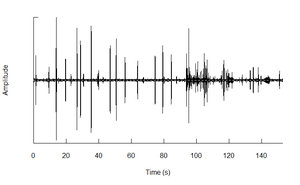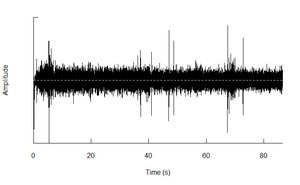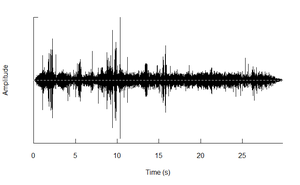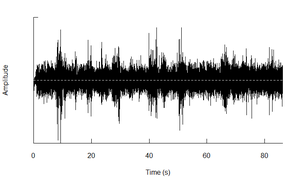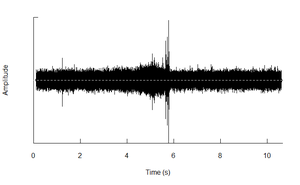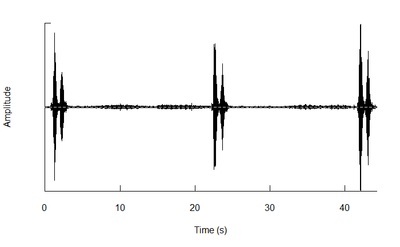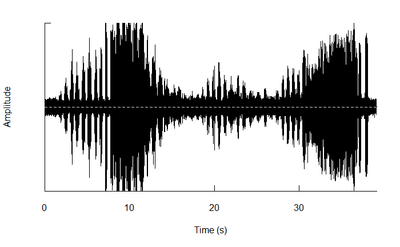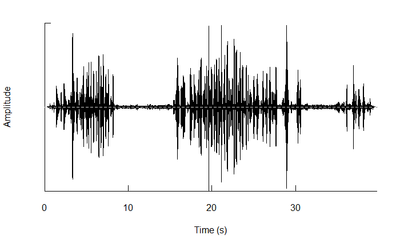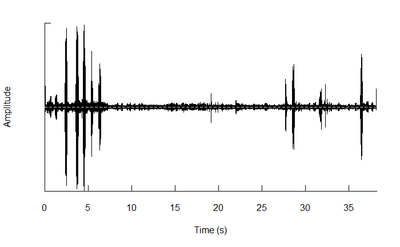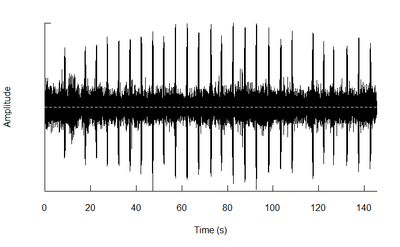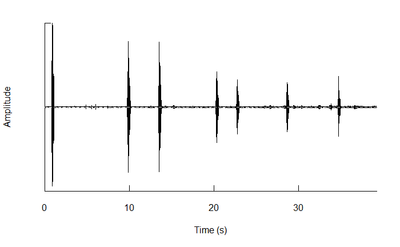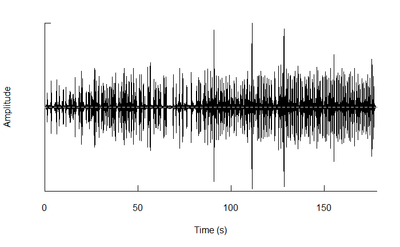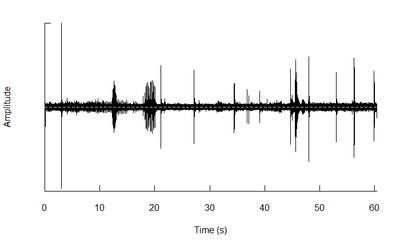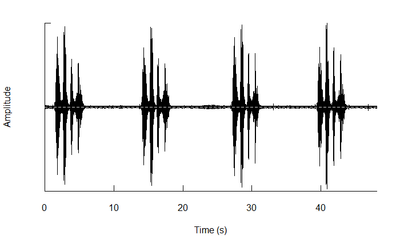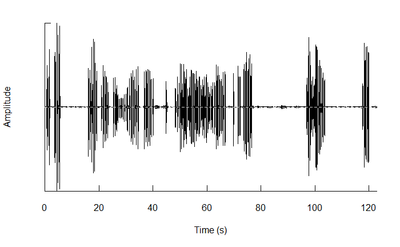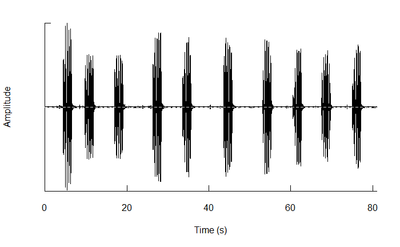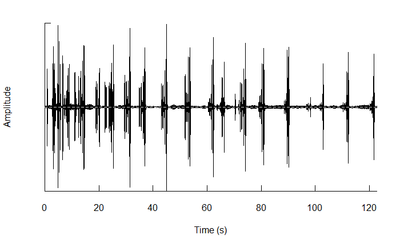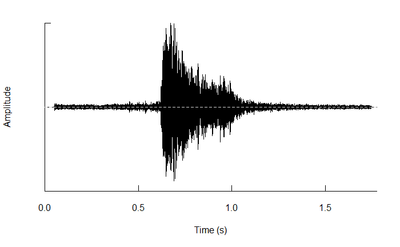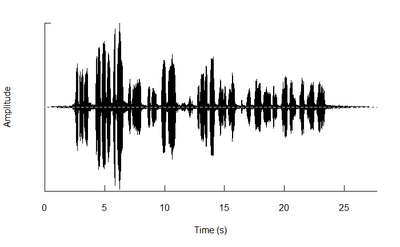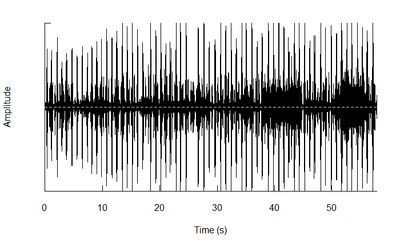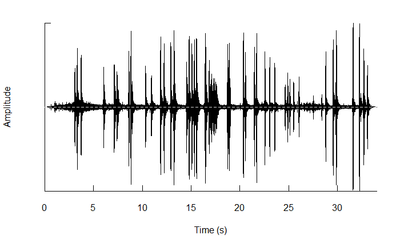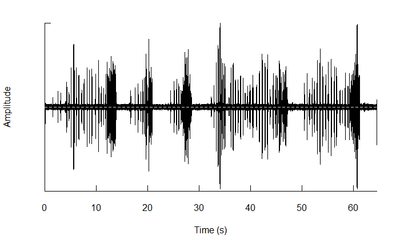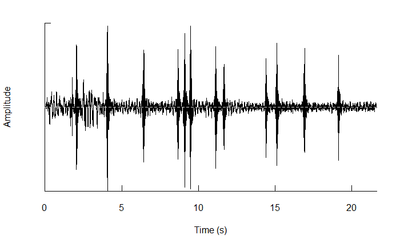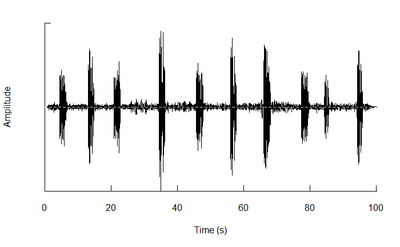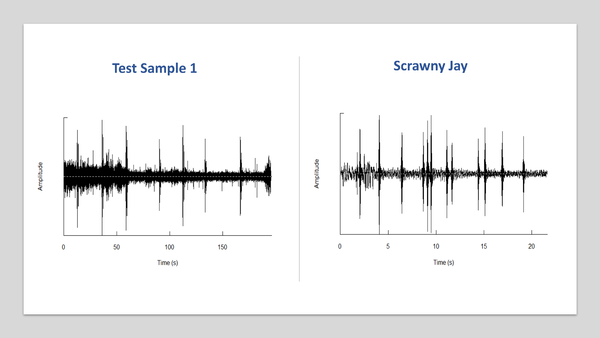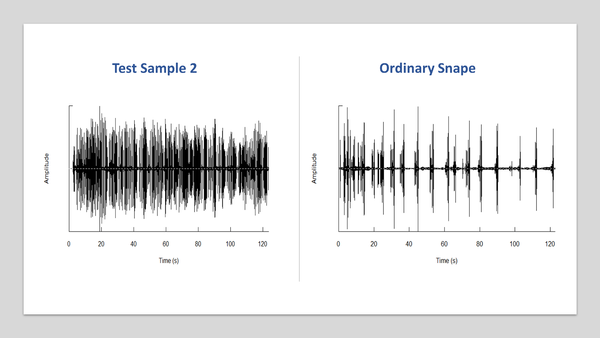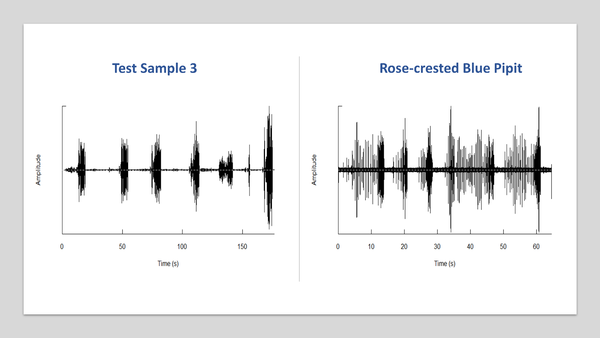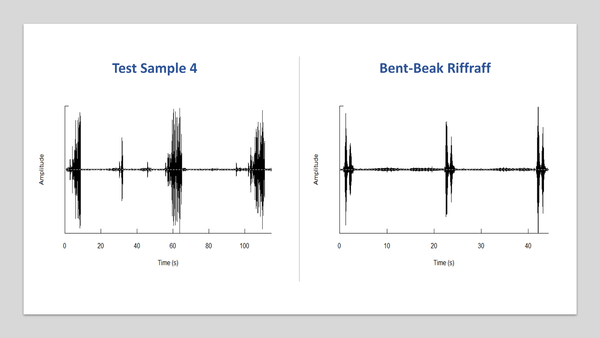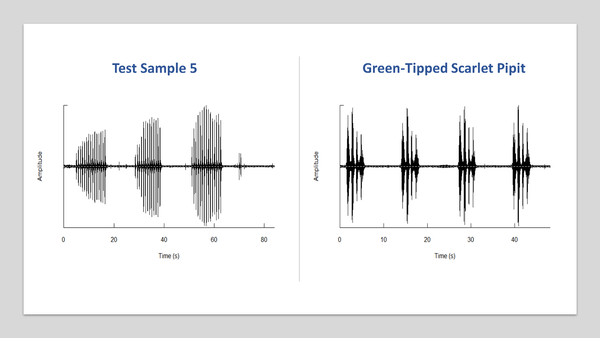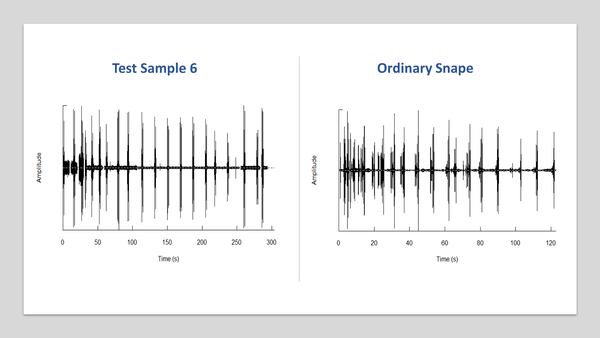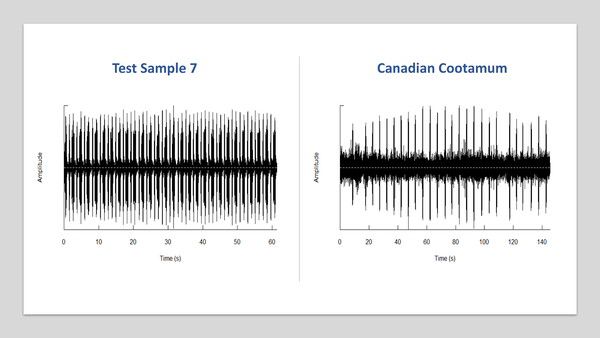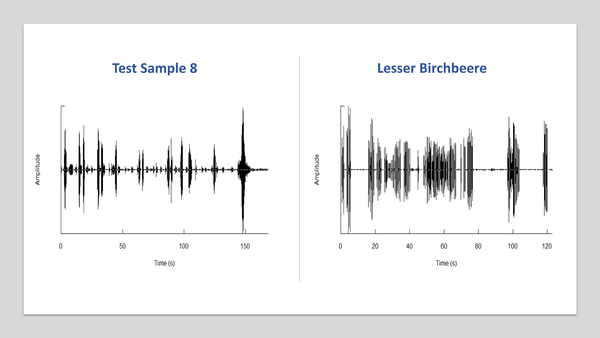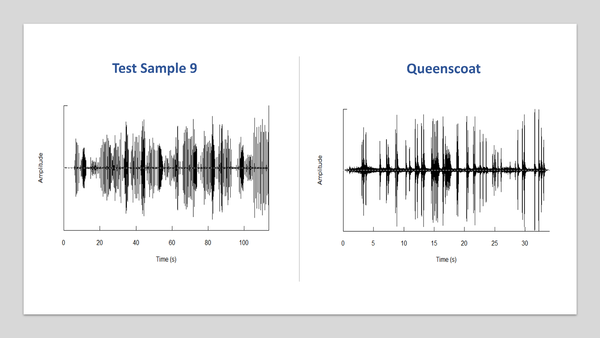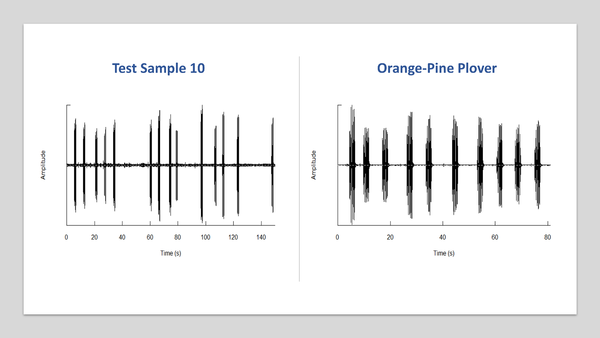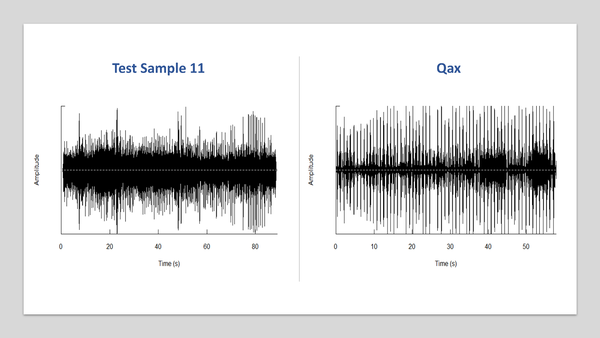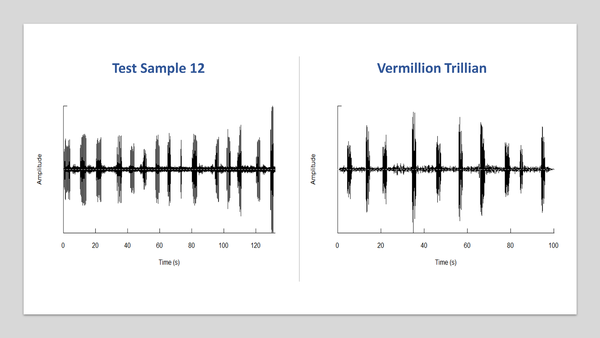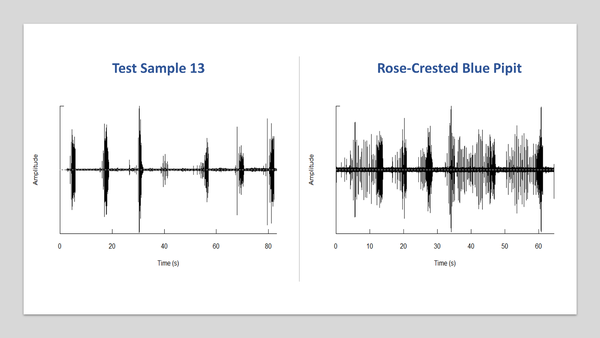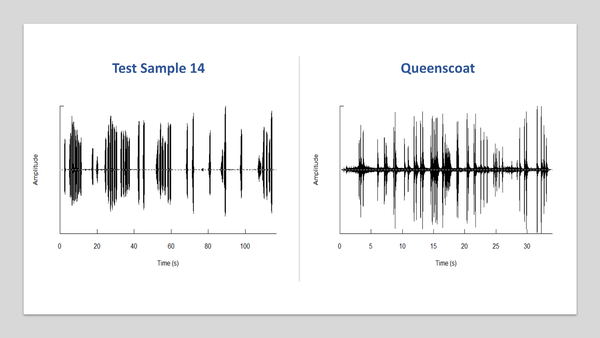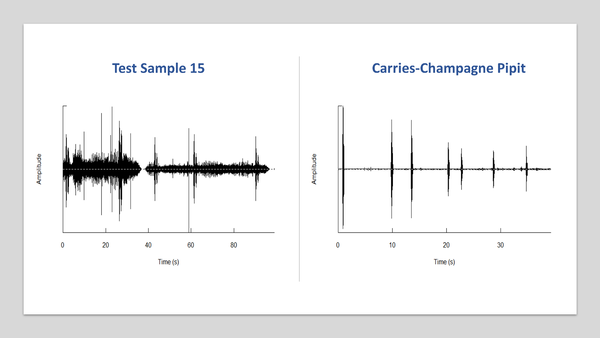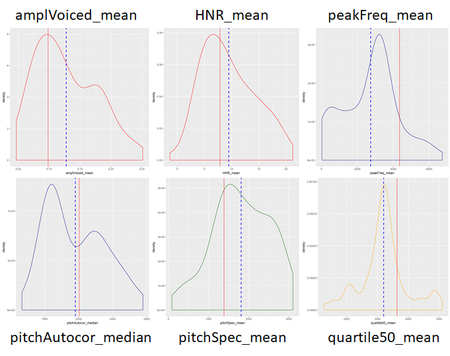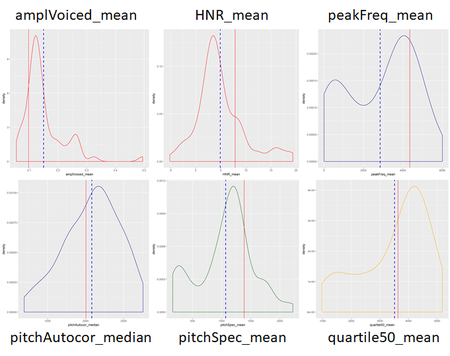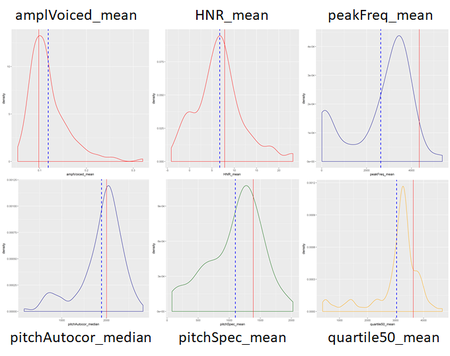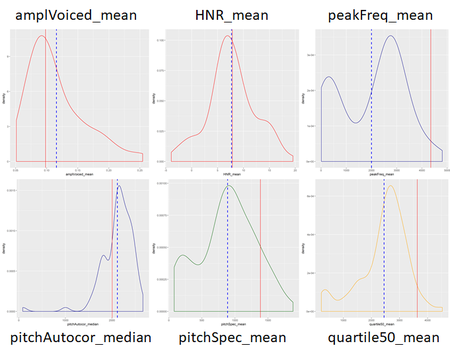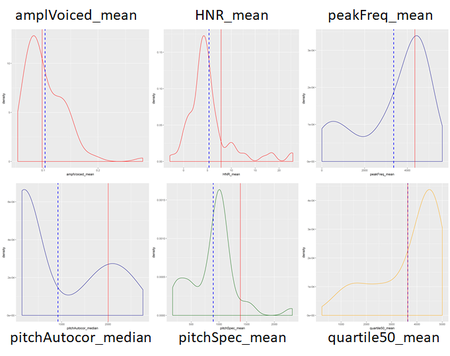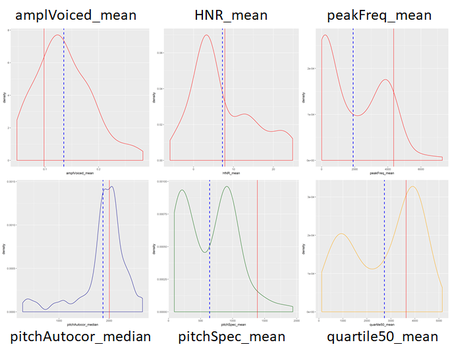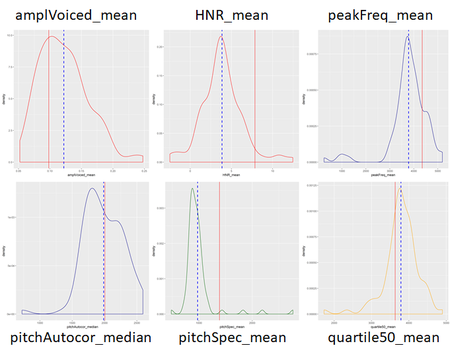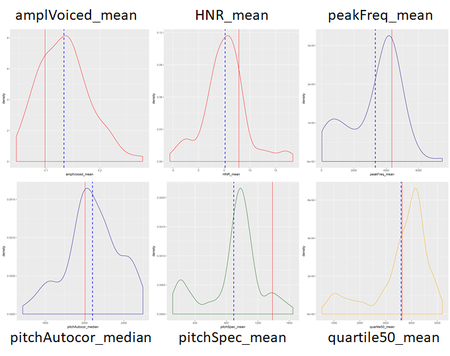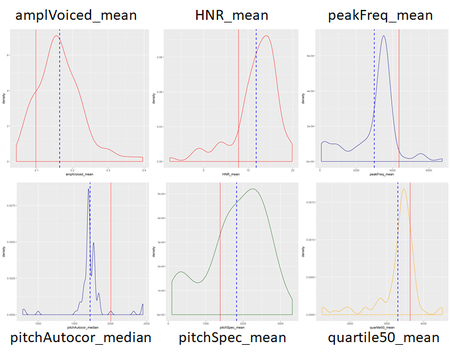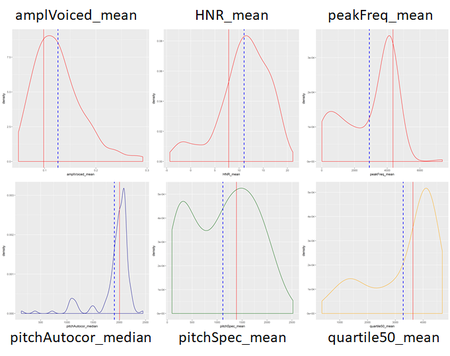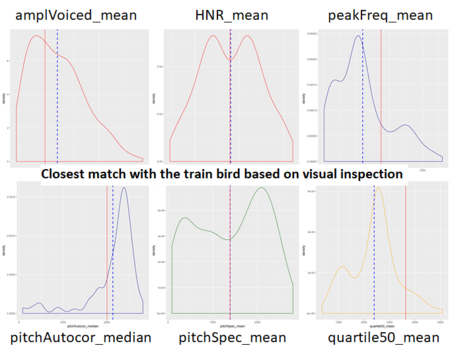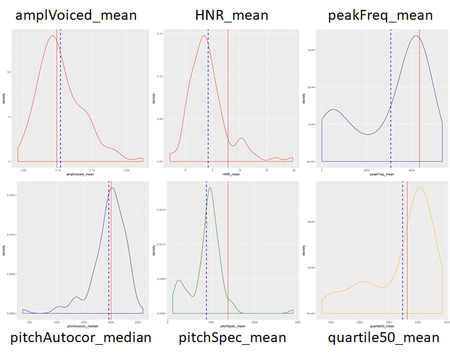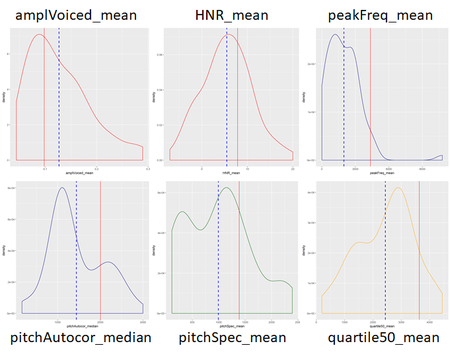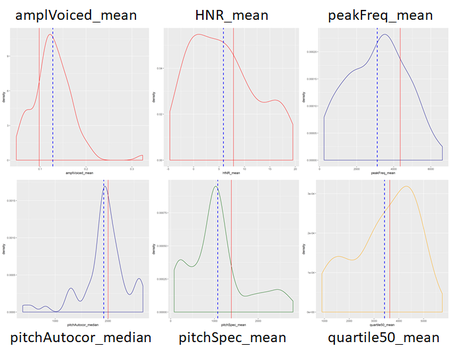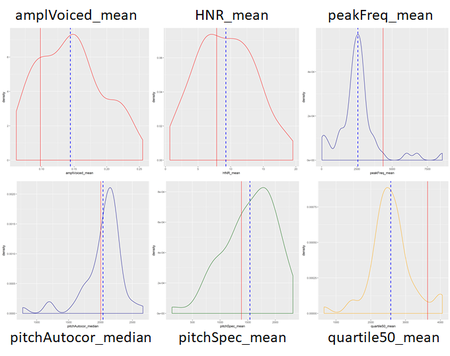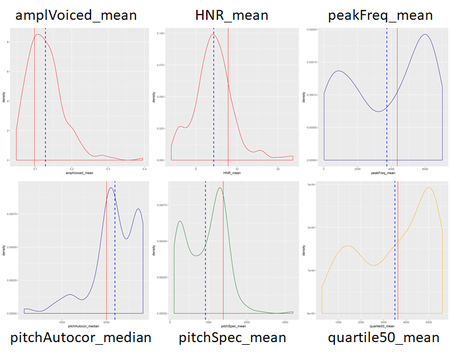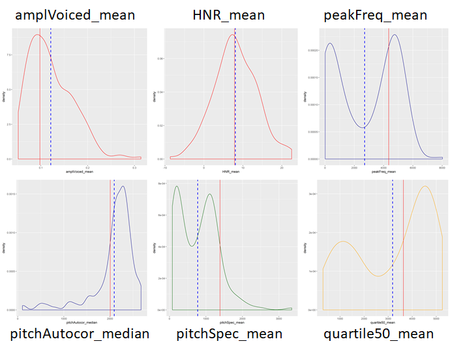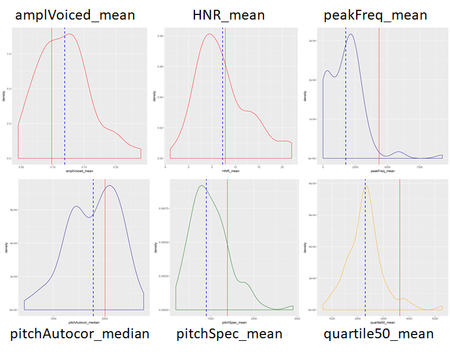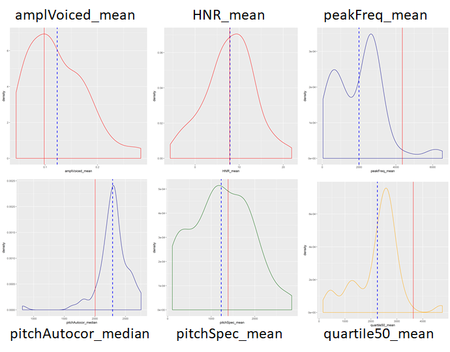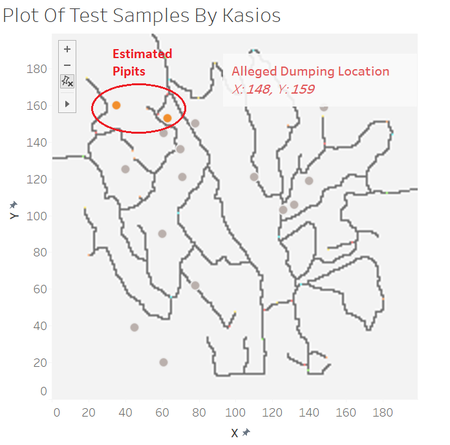ISSS608 2017-18 T3 Assign Akanksha Shrirang Yadav Insights
|
|
|
|
|
|
|
Analysis and Classification of Audio Files Through Visualizations
For analysis of question 2, two different approaches were implemented in order to evaluate the legitimacy of Kasios’ claim about the pipits.
- Comparison of Oscillograms of the Audio Files
- Comparison of Distribution of Plots Selected Audio Features with the Features of the Test Files
These methods were compared at the end to see if they produced similar or different results.
As the number of samples for each species is not sufficient enough, running a machine learning algorithm over such training data might yield poor results with low accuracy. Hence, in this analysis, the only focus was to do visual comparison of the plots obtained through both approaches.
Other approaches tried:
Spectrogram of all the files were plotted, but were not discernible enough for comparison of the audio files. Additionally, time measurement plots were also plotted to see if they can be useful in analysis. However, similar issue occurred while interpreting the plot. Hence, ultimately a simple oscillogram was chosen instead.
Conversion Of MP3 Audio Files to WAV
All the visualizations were built in R. As majority of the R packages can only read audio file in ‘.WAV’ format, all the audio files (All Birds & Test) were converted to ‘.WAV’ format using tuneR package.
Approach 1 - Oscillogram Comparison
- The provided audio files of all the birds have quality scores associated with them wherein the value of this score can be A, B, C, D, E or No Score. However, no description is provided about the different quality scores. For the analysis, audio files without any score were not taken into consideration.
- Hence, prior to beginning with the analysis, a set of 5 files were chosen with quality scores A, B, C, D & E for “Rose-crested Blue Pipit”. Out of these 5 files, the file with score A was found to be the clearest & without much noise. All other files were found to have varying degrees of noise in them.
The oscillogram plots of the chosen files are as shown below:
| Score A file | Score B file |
| Score C file | Score D file |
| Score E file |
Oscillogram Plots of 19 Training Birds
19 training birds were chosen one from each species of the birds and their oscillograms were plotted. Similarly, oscillograms were plotted for the test files provided by Kasios. All the test plots were compared with the chosen 19 birds individually to obtain the best estimate
Now, let’s look at the oscillogram plots of 19 species of the birds:
| Training Bird 1- Bent-beak Riffraff | Training Bird 2 - Blue-collared Zipper |
| Training Bird 3 - Bombadil | Training Bird 4 - Broad-winged Jojo |
| Training Bird 5 - Canadian Cootamum | Training Bird 6 - Carries Champagne Pipit |
| Training Bird 7 - Darkwing Sparrow | Training Bird 8 - Eastern Corn Skeet |
| Training Bird 9 - Green-tipped Scarlet Pipit | Training Bird 10 - Lesser Birchbeere |
| Training Bird 11 - Orange Pine Plover | Training Bird 12 - Ordinary Snape |
| Training Bird 13 - Pinkfinch | Training Bird 14 - Purple Tooting Tout |
| Training Bird 15 - Qax | Training Bird 16 - Queenscoat |
| Training Bird 17 - Rose-crested Blue Pipit | Training Bird 18 - Scrawny Jay |
| Training Bird 19 - Vermillion Trillian |
Comparison Of Test Samples With The Oscillograms Of All Bird Recordings
Test Sample 1:
Test Sample 2:
Test Sample 3:
Test Sample 4:
Test Sample 5:
Test Sample 6:
Test Sample 7:
Test Sample 8:
Test Sample 9:
Test Sample 10:
Test Sample 11:
Test Sample 12:
Test Sample 13:
Test Sample 14:
Test Sample 15:
After comparing the test oscillogram plots obtained with train plots & performing visual analysis, the estimated
Estimated Outcome:
| Test Samples | Estimated Outcome |
|---|---|
| Test Sample 1 | Scrawny-Jay |
| Test Sample 2 | Ordinary Snape |
| Test Sample 3 | Rose-Crested-Blue-Pipit |
| Test Sample 4 | Bent-Beak-Riffraff |
| Test Sample 5 | Green-Tipped-Scarlet-Pipit |
| Test Sample 6 | Ordinary-Snape |
| Test Sample 7 | Canadian-Cootamum |
| Test Sample 8 | Lesser Birchbeere |
| Test Sample 9 | Queenscoat |
| Test Sample 10 | Orange-Pine-Plover |
| Test Sample 11 | Qax |
| Test Sample 12 | Vermillion-Trillian |
| Test Sample 13 | Rose-crested Blue Pipit |
| Test Sample 14 | Queenscoat |
| Test Sample 6 | Carries-Champagne-Pipit |
Approach 2 – Comparison of the Distribution Plots
For this analysis, various features of the audio files were retrieved using ‘analyzeFolder’ function found in ‘soundgen’ package in R. This function has the capability of processing batch files as well as also outputs the result in a summary dataframe which contains all the extracted features for all the files.
70 such features were obtained from the audio files. To reduce the number of variables, correlation plot was obtained to discard highly correlated variables. The variables were then clustered in hierarchical clusters using ‘Variable Clustering’ method in SAS JMP. Finally, the following 6 features were selected for further analysis:
- ampleVoiced_mean
- HNR_mean
- peakFreq_mean
- pitchAutocor_median
- pitchSpec_mean
- quartile50_me
Next, the distributions for these variables for all the 19 species were plotted.
Also, similar features were obtained for the test audio files.
The 6 features of the test files were individually compared with the 6 features of 19 species using density plot in R. The test sample bird was classified with the species with most number of features closer to the means of the respective features for that species.
The resultant plots are displayed here for a sample bird for illustration -> Test Sample 3
Test Sample 3 was estimated to be "Orange-Pine Plover"
| Bent-beak Riffraff | Blue-collared Zipper |
| Bombadil | Broad-winged Jojo |
| Canadian Cootamum | Carries Champagne Pipit |
| Darkwing Sparrow | Eastern Corn Skeet |
| Green-tipped Scarlet Pipit | Lesser Birchbeere |
| Orange Pine Plover | Ordinary Snape |
| Pinkfinch | Purple Tooting Tout |
| Qax | Queenscoat |
| Rose-crested Blue Pipit | Scrawny Jay |
| Vermillion Trillian |
Upon visual examination and comparison of the plots, the estimated outcome is:
Estimated Outcome:
| Test Samples | Estimated Outcome |
|---|---|
| Test Sample 1 | Easter Corn Skeet |
| Test Sample 2 | Rose-crested Blue Pipit |
| Test Sample 3 | Orange-Pine-Plover |
| Test Sample 4 | Bombadil |
| Test Sample 5 | Green-Tipped-Scarlet-Pipit |
| Test Sample 6 | Scrawny-Jay |
| Test Sample 7 | Canadian-Cootamum |
| Test Sample 8 | Ordinary-Snape |
| Test Sample 9 | Vermillion-Trillian |
| Test Sample 10 | Qax |
| Test Sample 11 | Qax |
| Test Sample 12 | Easter Corn Skeet |
| Test Sample 13 | Rose-crested Blue Pipit |
| Test Sample 14 | Queenscoat |
| Test Sample 6 | Pinkfinch |
Note that, both the outcomes do not match as they are based on only visual inspection. Although, by using the second approach, an attempt is made to classify the birds based on the statistical distributions of the species, it is still uncertain to an extent.
Plotting Test Samples By Kasios
Both approaches predicted 2 samples as "Rose-crested Blue Pipit", albeit 1 sample differed.
Plot for the test birds using the results from distribution analysis:
This analysis does prove that the claim made by Kasios about "Pipits being found across the preserve" does not hold good. In fact, out of a meager 15 samples provided by Kasios, only 2 are estimated to be Pipits. Additionally, these 2 Pipits were not found anywhere near the dumping site.

